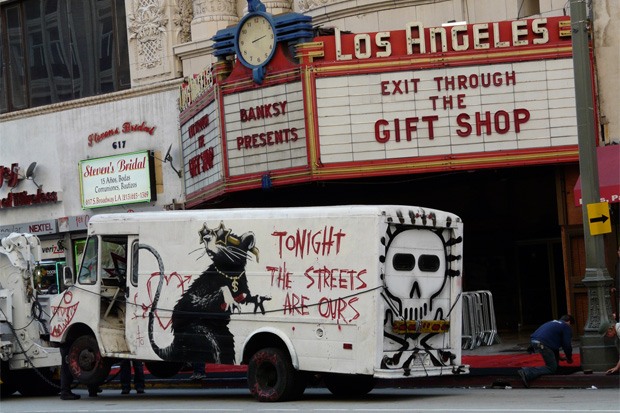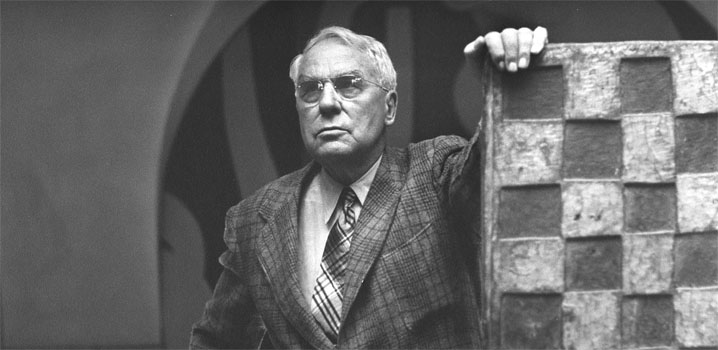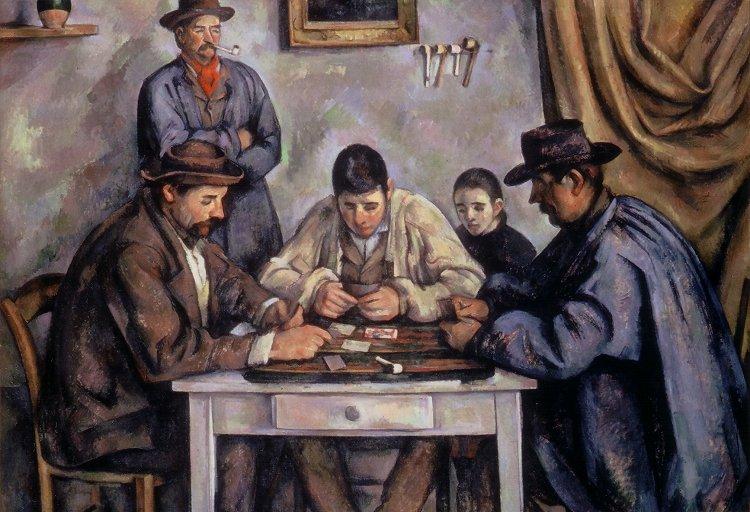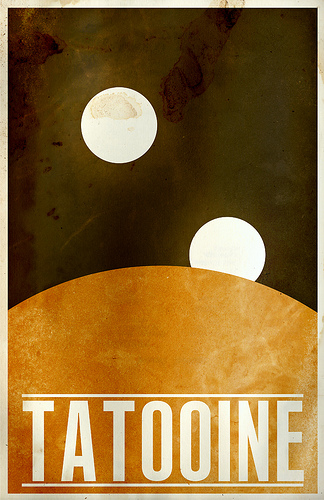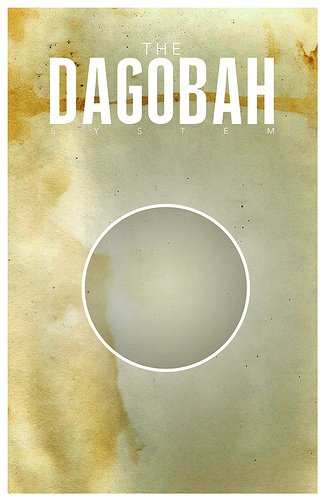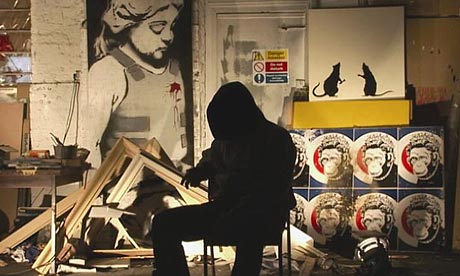
Ostensibly a documentary about the world of street art in the post-graffiti era, as well as the found story of an artist of dubious talent’s meteoric rise to stardom, Exit Through the Gift Shop, as the name implies, is also a complicated and funny disquisition about the overlapping and almost impossible-to-disentangle spheres of art, commerce, money, and popular taste. Given’s Banksy’s statement on the second day of his 2007 Sotheby’s auction — “I can’t believe you morons actually buy this s**t” — there seems a very solid chance that Gift Shop is a well-crafted put-on. (Is he ‘aving a laff?) Whether he is or he isn’t, Exit is a pretty fun ride, and it definitely gives you an urge to get out there and create something.
Narrated throughout by Rhys Ifans, our story begins with one Thierry Guetta, a French shopowner and family man living in Los Angeles. Thierry, it seems, is one of those possibly-genius, more-likely-just-plain-crazy strange birds that tend to gravitate toward the City of Angels. His particular inflection of weirdness: He starts carrying around a video camera with him everywhere he goes — work, home, the bathroom, the streets, you name it. He doesn’t watch any of the tapes, mind you — he just records them. Having lost his mother at a young age, Thierry is now obsessed with capturing ever single iota of his existence on film, so no moment is ever again lost…like… tears…in rain.
As you can imagine, this constant filming drives everyone around Thierry to the point of distraction. But his hobby gains focus when, on a trip to Paris, he discovers his cousin is the one-and-only Invader, a street artist filling Paris and the world over with Space Invader mosaics. His interest piqued, Thierry soon plunges head-first into this hidden world of expressive ne’er-do-wells and hit-and-run artistry, thanks to a connection made through his cousin: the now-famous Shepherd Fairey. (As an aside, Fairey hails from Charleston, SC, not-so-far down the road from where I grew up, and I and a goodly part of my high-school class spent most of 1992 and 1993 festooning the Palmetto State with his Andre the Giant stickers.)
And so Thierry becomes the video chronicler of an underground movement (or the video recorder, at least — the tapes just pile up in boxes at his house.) But his menagerie of street artists is missing the prize catch: Banksy, the wily, witty British stencil artist known for elaborate stunts like painting up both sides of the West Bank Wall. Having a secret identity and all, Banksy is a hard man to track down, but the obsessive Thierry is not one to be deterred. So, when Banksy comes to town to do some work (and put on a show), Fairey makes an introduction. Indeed, Thierry even manages to gain the reclusive artist’s trust after helping put a Gitmo detainee in Disneyland, and the rest is history.
Ah, but our story is not over yet. Y’see, Banksy finds out about all the tapes, and asks to see Thierry’s movie. Thierry…isn’t so good at making movies. So, while Banksy culls through hours and hours of raw material, he suggests Thierry go have some fun, maybe make some art somewhere. This poses a new challenge for our OCD hero, and Thierry — now remonikered Mr. Brainwash (MBW) — takes it on his inimitable fashion. The result: A ginormous art show in LA entitled “Life is Beautiful”, teeming over with crappy, lowest-common-denominator pop-art that is half-Warhol, half-Banksy, and pretty much all sloppy and derivative. And, as sure as spring follows winter, people love it, Mr. Brainwash is everyone’s favorite new flavor, and Madonna commissions him for an album cover. Wow, this being a street artist thing is easy!
Or is it? It’s an open question whether Mr. Brainwash is another elaborate Banksy hoax, and if I had to bet on it, I’m thinking — despite Shepard Fairey’s protestations — the fix is in. (We never actually see him create anything, and, while I don’t think he himself is Banksy, there’s a reason Thierry looks so much like Tony Clifton.)
But, in the end, as one of Banksy’s co-conspirators says in Gift Shop, who’s the joke on? Mr. Brainwash is now a millionaire, and a lot of people spent a lot of money on his mostly uninspired and pedestrian works. But, you know, they seem to like them…so what does that tell us about what constitutes good art in the first place? Banksy never breaks character or show his cards here — He just lets the story play out and lets you think what you want. And say what you will about Banksy and his possible protege, they earned my $10 with this merry, subversive eff-you to the art world, the Sotheby’s crowd and any would-be arbiters of artistic taste. If it is a grift, and I think it probably is, Exit Through the Gift Shop is nonetheless an open-ended and very enjoyable one.
